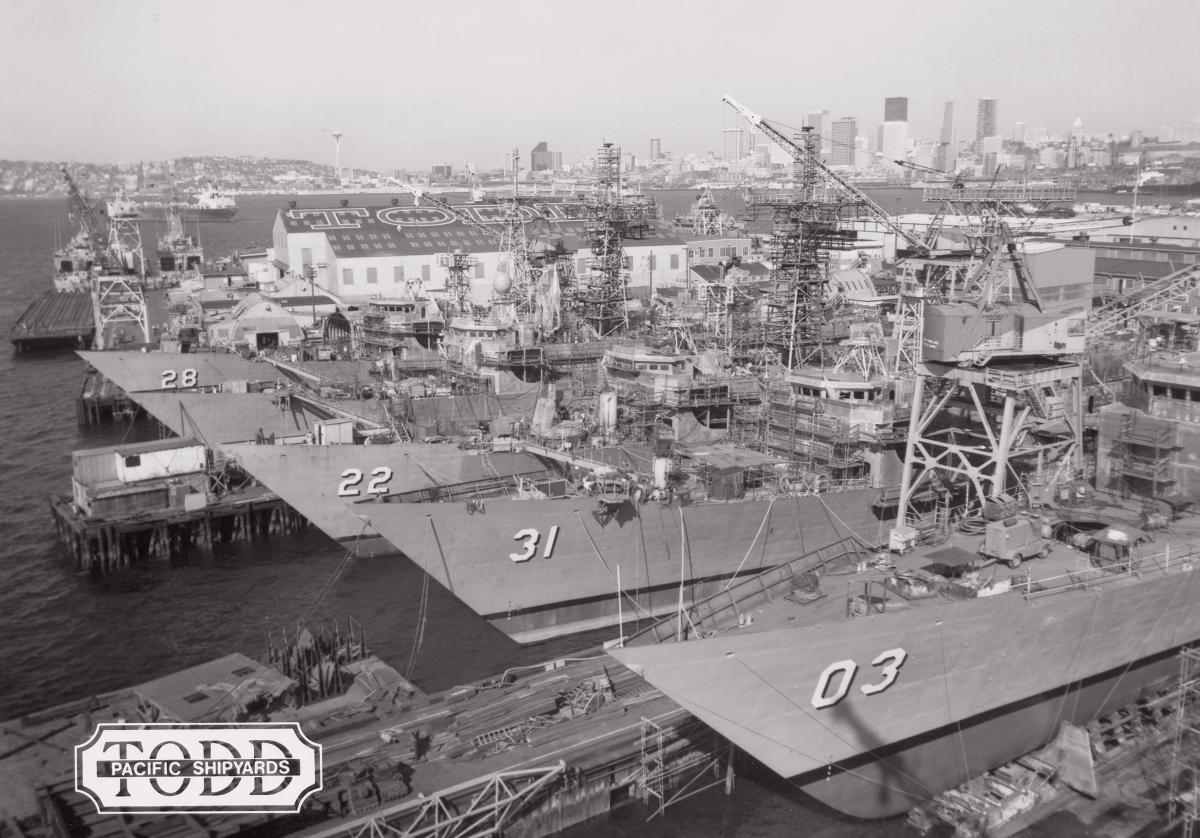In some respects, a ship is like a building, having floors (decks), ceilings (overheads), corridors (passageways), and stairs (ladders). But there are other parts of a ship that are unique and have their own terminology.
The hull is the main body of the ship. Metal shell plating forms the sides and bottom, and the weather deck or main deck forms the top. Where the sides join the main deck is called the gunwale (rhymes with “funnel”). The outermost layer of plating and decking is called the skin of the ship.
The shape and construction of the hull depend on the type of ship. Ships designed for high-speed operations—such as destroyers and cruisers—have long, narrow hulls with fine lines. Aircraft carriers and auxiliary ships have hulls with square center sections, vertical sides, and flat bottoms for greater carrying capacity. Submarines, designed to operate underwater, have hulls that are rounded, like an egg, because that shape withstands great pressure.
The keel is the backbone of the ship and usually looks like an I-beam running the full length of the vessel along the bottom at dead center. The forward end of the keel, extending upward, is the stem; the after end, extending upward, is the sternpost. Frames are beamlike structures fastened at right angles to the keel, like ribs, that support the watertight skin, or shell plating. Most ships built for the Navy also have longitudinal frames running fore and aft. The longitudinal and athwartship frames form an egg-crate structure in the bottom of the ship, which, when inner-bottom plating is welded to it, creates what is called a double bottom.
What would be interior walls in a building are called bulkheads if they are weight-supporting and watertight, and partitions if they are not. Solid (except for openings such as doors and ventilation ducts) “walls” inside the hull, extending from one side of the ship to the other, are called transverse bulkheads. Openings in bulkheads and partitions are called doors, while openings in decks are called hatches. Deck beams, transverse bulkheads, and stanchions (posts) support the decks and help strengthen the sides against water pressure.
Weight that is added to a ship’s inner bottom to balance her topside weight is called ballast. Some ships carry permanent concrete ballast; others pump saltwater into tanks to serve as temporary ballast, pumping it out when it is no longer needed.
Where the hull meets the surface of the water is called the waterline. Any part of the ship underwater is below the waterline; any part of the ship that is in air is above the waterline.
Vertical extensions of the shell plating above the deck edge, which serve as a kind of solid fence, are called bulwarks. They shield deck areas from the direct effects of waves and keep personnel and equipment from going overboard. Lifelines, which are wire ropes mounted on short stanchions and stretched tight by turnbuckles also form a kind of safety fence around the edges of the ship’s weather decks (where there are no bulwarks).
The vertical distance from the waterline to the keel determines a ship’s draft and is measured in feet and inches. Draft markings are six-inch-high numbers marked on the hull near the stem and stern.
The part of the ship’s hull that extends from the waterline to the first weather deck is called freeboard.
To protect the ship’s propellers (also called screws) from damage when coming alongside a pier or mooring next to another ship, steel braces are mounted at the stern directly above the propellers. These are appropriately called propeller guards (or screw guards).
Structures above the main deck are collectively referred to as the superstructure. Aircraft carriers are an exception, having an island above the flight deck. Different kinds of ships have different types of superstructure. Often, the superstructure is topped off by one or more masts. At its simplest, a mast is a single vertical pole that may be fitted with a crossbar, called a yardarm, which may carry flag halyards (lines used to hoist flags), navigational and signal lights, and various electronic devices and antennae. If the ship has two masts, the forward one is called the foremast, the after one the mainmast.
The top of a mast is called the truck. The pigstick is a slender vertical extension above the mast from which the ship’s commission pennant or an admiral’s personal flag flies. A pole called a gaff usually extends at an angle abaft the mainmast and is used to fly the national ensign when the ship is under way. The vertical spars at the bow and stern are called the jackstaff and flagstaff, respectively.
The ship’s stack (or stacks) serves the same purpose as the smokestack on a power plant or the chimney on a house; it carries off gases from the ship’s engines and generators. Some diesel-powered ships release their exhaust from the sides of the ship’s hull rather than through a stack. On some ships, the masts and stacks have been combined to form large towers called macks.
While a complete compilation of ship terminology could easily fill a weighty volume, these few basic terms related to the construction of ships are a good starting point toward understanding sailors when they speak their special nautical language.




